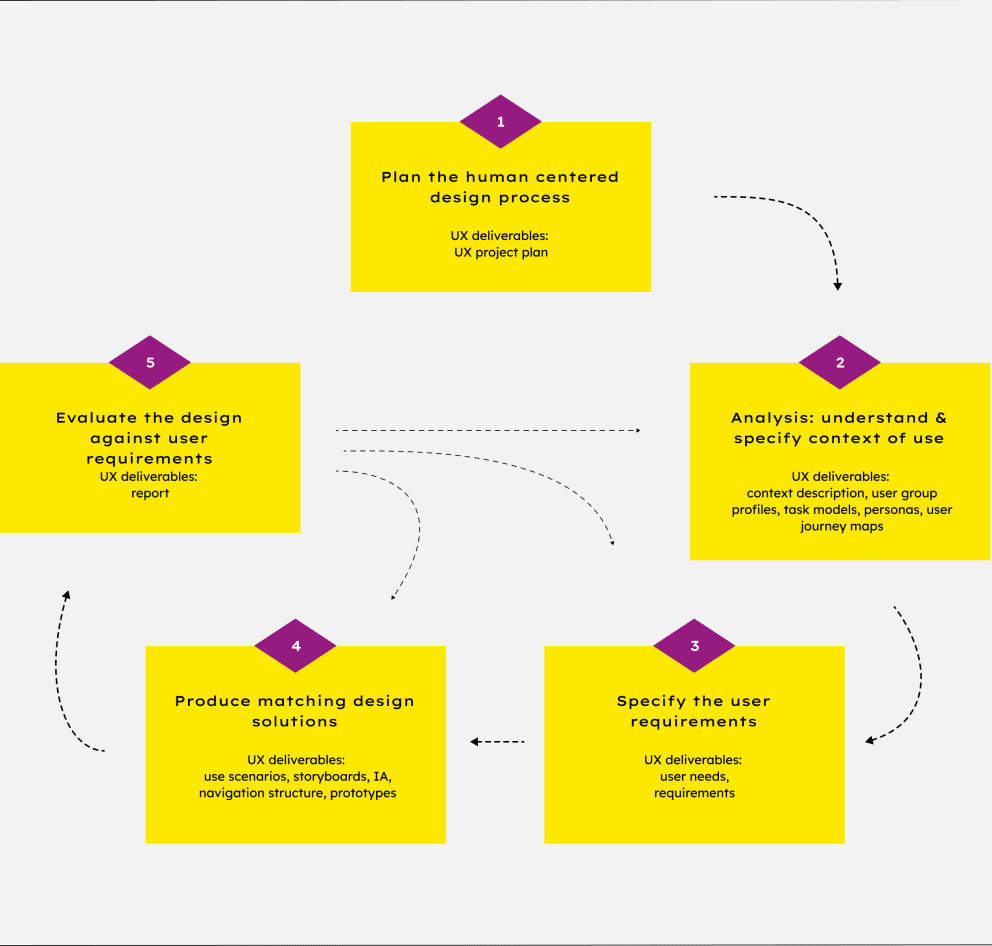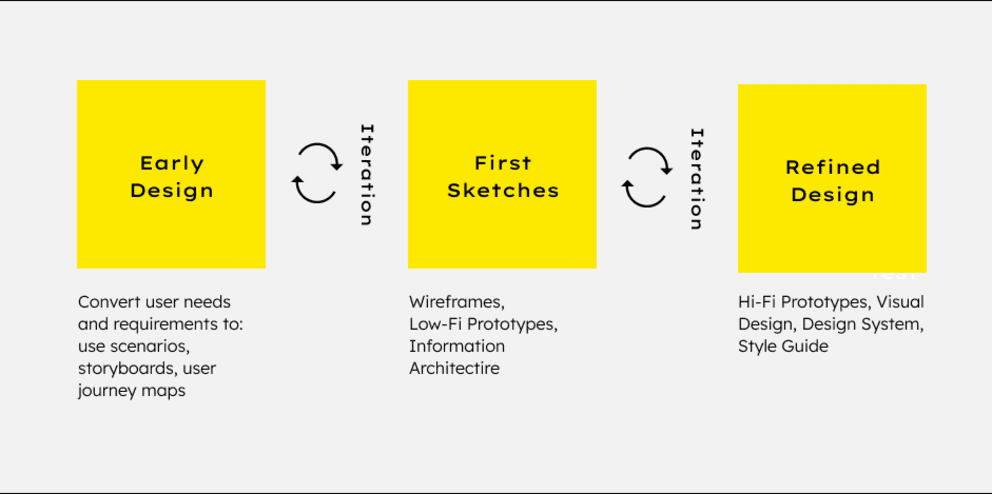Human-centred Design As A Success Driver For Your Websites
In order to develop an interactive system that is usable and useful for users, we not only have to find out as much as possible about those users and their requirements, we also ideally have to include them in the design process. This is the only way to gain a proper understanding of the users, their tasks and the context of their working environment.
Our approach to experience design adds the most value to your business model by crafting holistic user experiences that are effective, user-centric, creatively designed and built state-of-the-art using open source tech like Drupal 9.
The standard: "Process for the design of systems suitable for use" (DIN ISO EN 9142-210) offers a promising flow chart showcasing this. It is not necessary to follow every single step of these standards, but it does offer some successful guidelines that can lead to valuable insight, insight that delves into the thinking and needs of users during implementation. This process also complements the idea of agile development and Lean UX perfectly.

In an iterative process, five key activities of the human-centred design process are used to evaluate design solutions. This occurs until the defined user requirements are reached. Human-centred design involves the planning of iterations in order to get feedback from users as early and often as possible.
1. Plan the human-centred design process
This refers to the creation of a user experience project plan which includes human-centred goals. In principle, this relates to a classic project plan, i.e. who does what and by when.
2. Analysis: understand and specify the context of use
This is about understanding and describing who the users are, what they do, what problems they have, and what their needs are in relation to the planned website or interactive system. Interviews with real users in their natural environment are ideal. Possible UX results in the Context of Use description: personas, user group profiles, task models, actual scenarios and user journey maps.
3. Specify the user requirements
Based on the previously created analysis and user needs, precise and determinable user requirements are now acquired and the website must fulfil these requirements before it can be released. The usage requirements also serve as a guideline for the design to ensure that the interactive system meets the user's expectations as much as possible.
4. Design: produce design solutions to meet user requirements
The first design-relevant results can now be developed in iterative cycles until the usage requirements have been fully met.
Usage scenarios, storyboards and user journey maps are effective and inexpensive ways to describe the tasks and paths on the future website. At the same time, the navigation architecture and navigation can now be developed on the basis of these findings. It is recommended to first create rough wireframes and low-fidelity prototypes in order to evaluate these with users in the next step and to increase the level of detail step by step until a production-ready design is available that meets the usage requirements.

5. Evaluate the design against user requirements
The evaluation refers to verifying whether the design solutions meet the usage requirements. This process should involve a usability test with representative users, a usability inspection by a UX expert or a user survey. The results from an evaluation often show weaknesses which lead us back to step 2, 3 or 4, where we can fix the findings in the next iteration.
If you have finally managed to meet all user requirements, you will have created a website that offers real added value for all users. The satisfaction of your users will have a lasting positive effect on your website goals. This is also shown in a study by McKinsey & Company from 2018, which demonstrates the connection between the economic success of a company through user-centred design in fast, iterative cycles and interdisciplinary teams.
Conclusion
Aligning your web presence with human needs offers significant advantages that benefit users as well as you as a brand. This is because products with demonstrably good acceptance are not only more successful in technical terms, but also in commercial terms.
Only if a user's expectations are fulfilled do they experience a positive user experience that could prompt them to use the product again. The user experience therefore also has a direct impact on:
- the economic success of a product or a company
- the image (or the image of others)
- customer loyalty and purchase loyalty
Need creative, innovative, and functional solutions that go beyond advertising to keep up with the evolution of business models, markets and user behaviours?